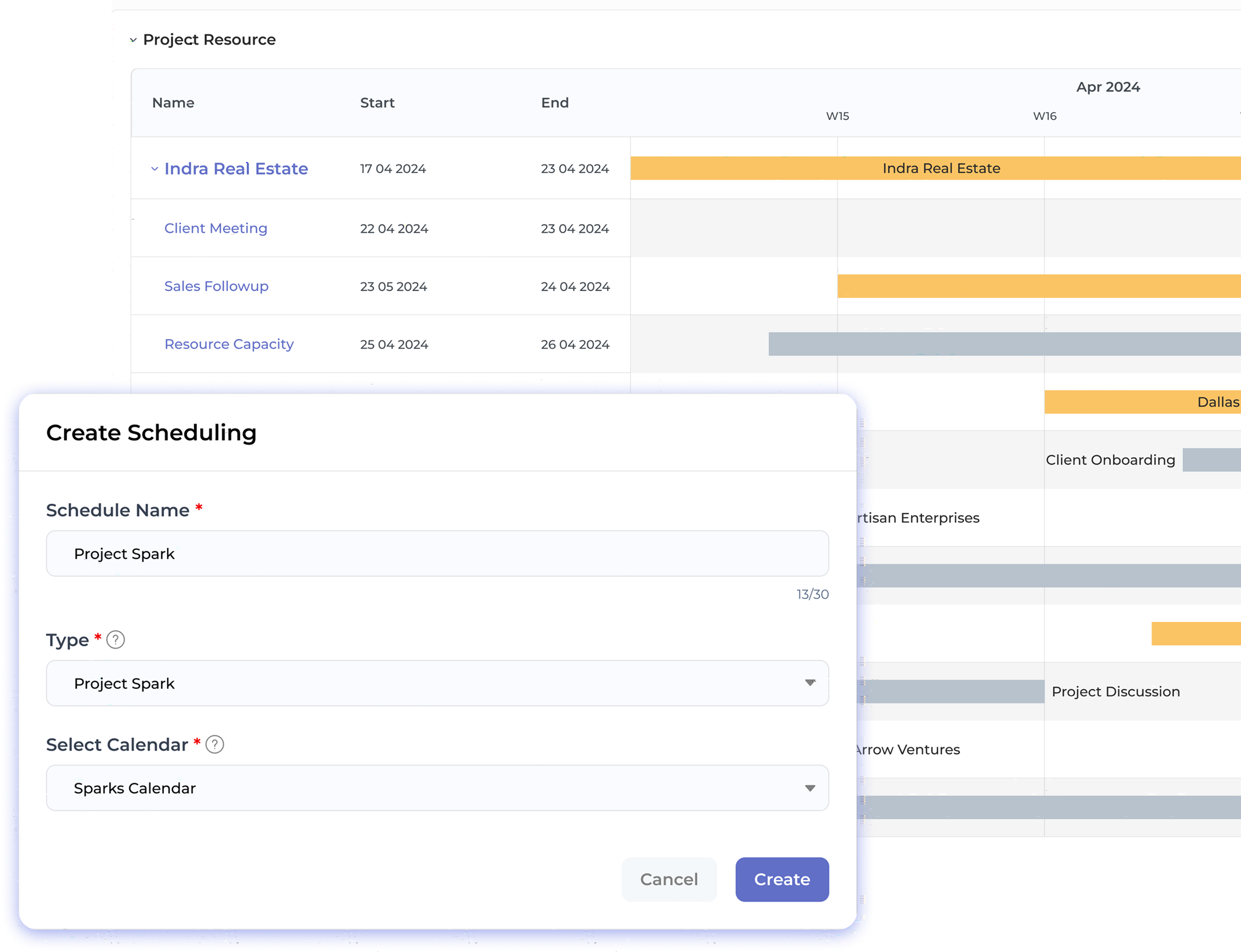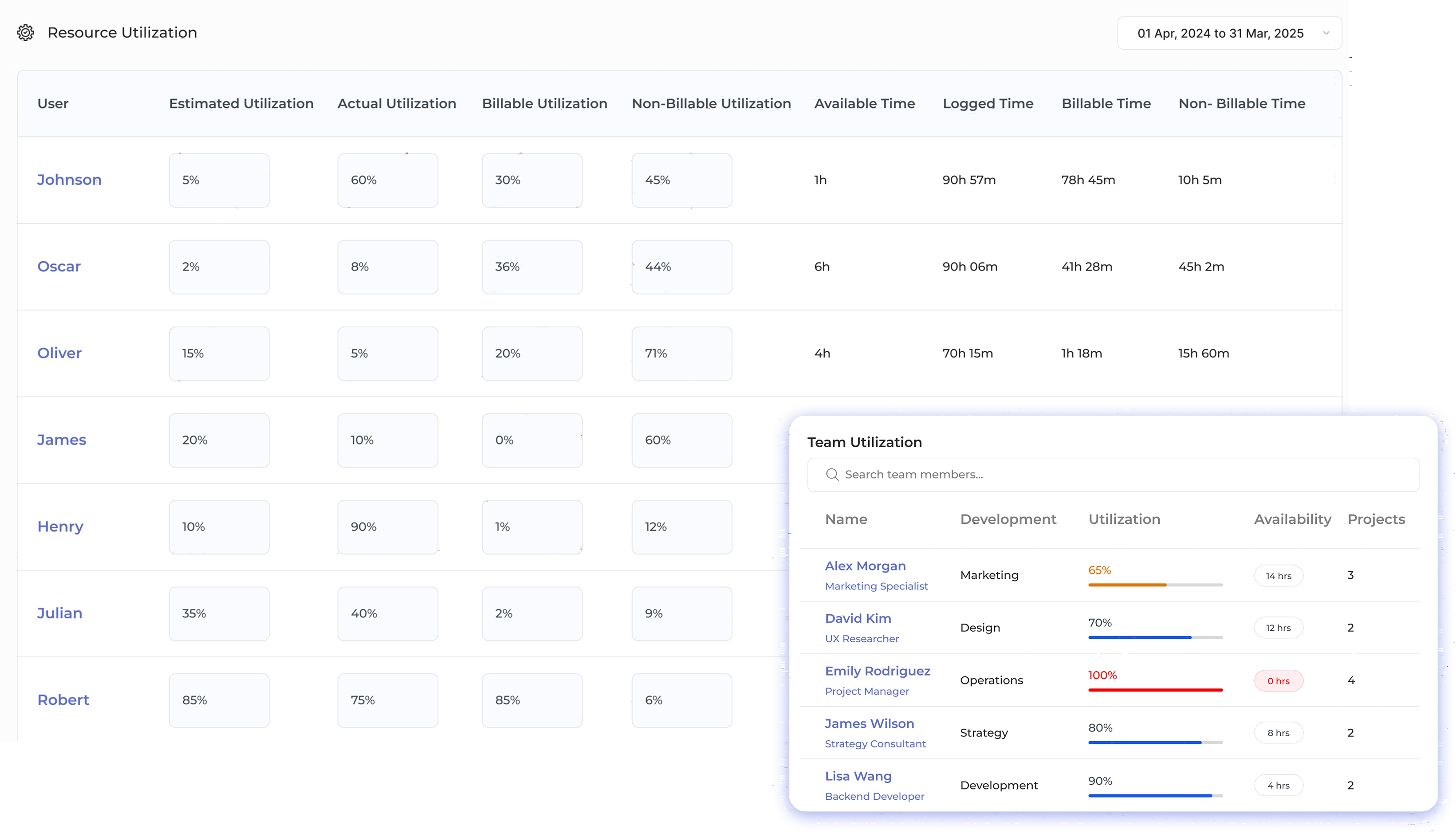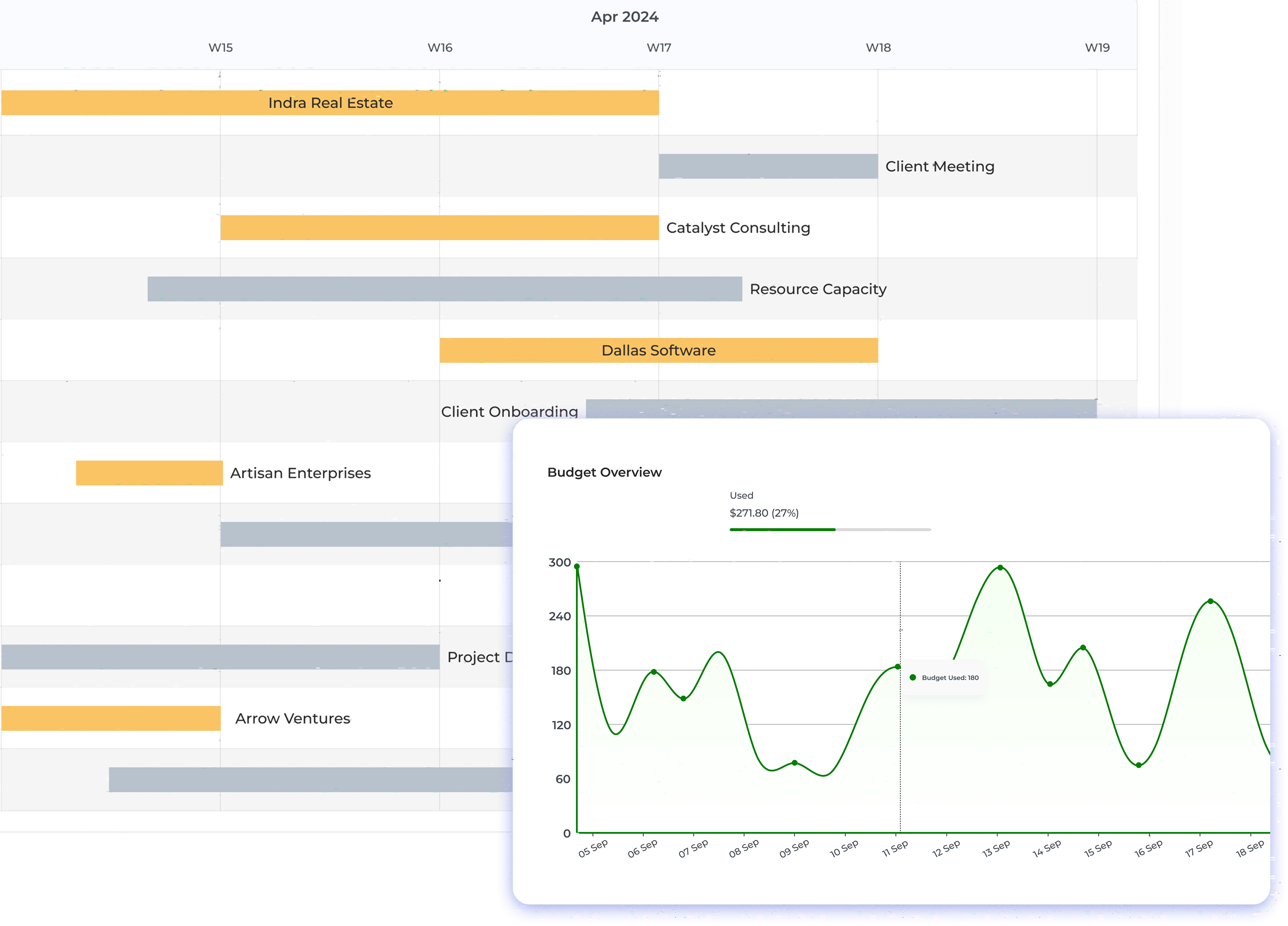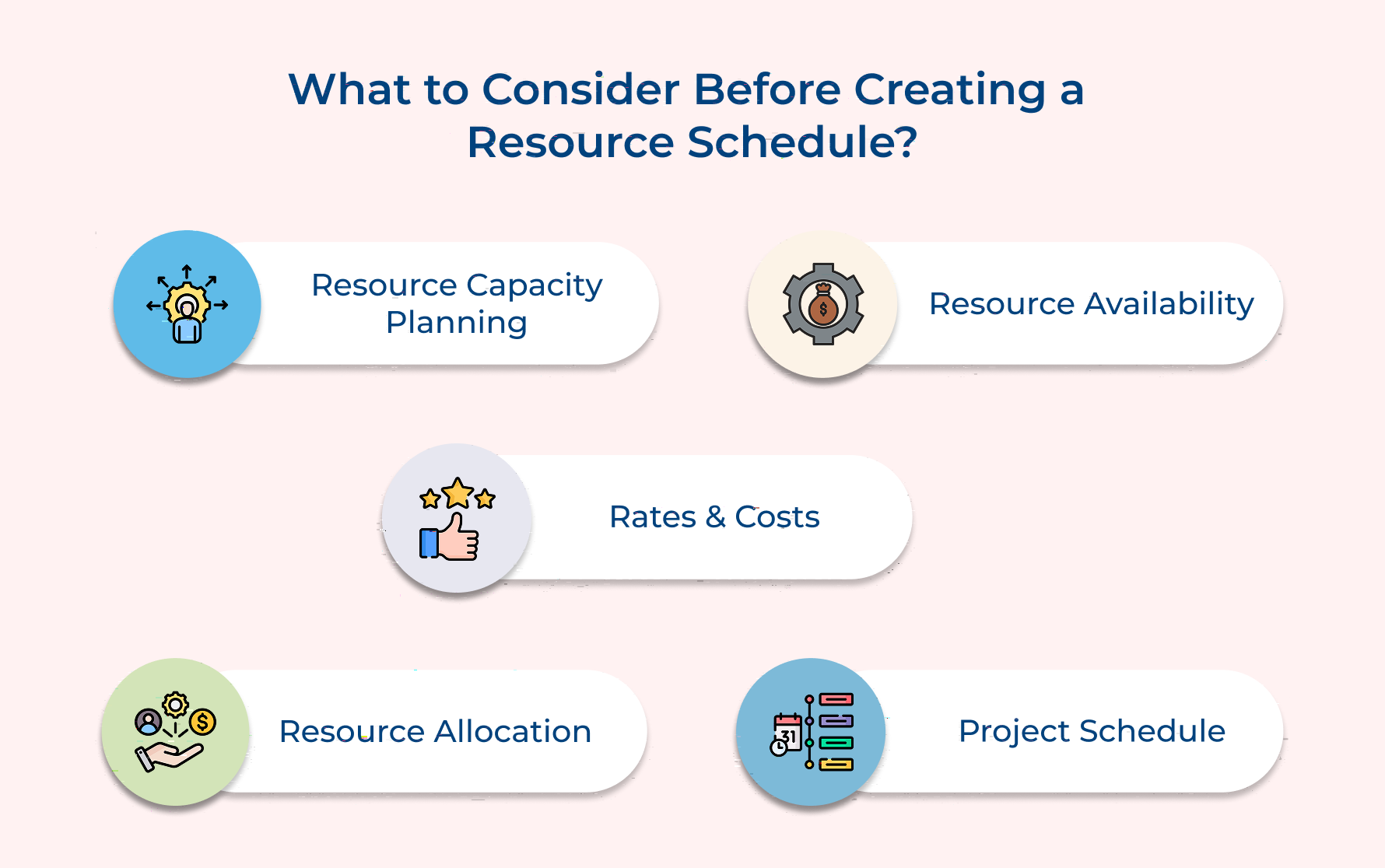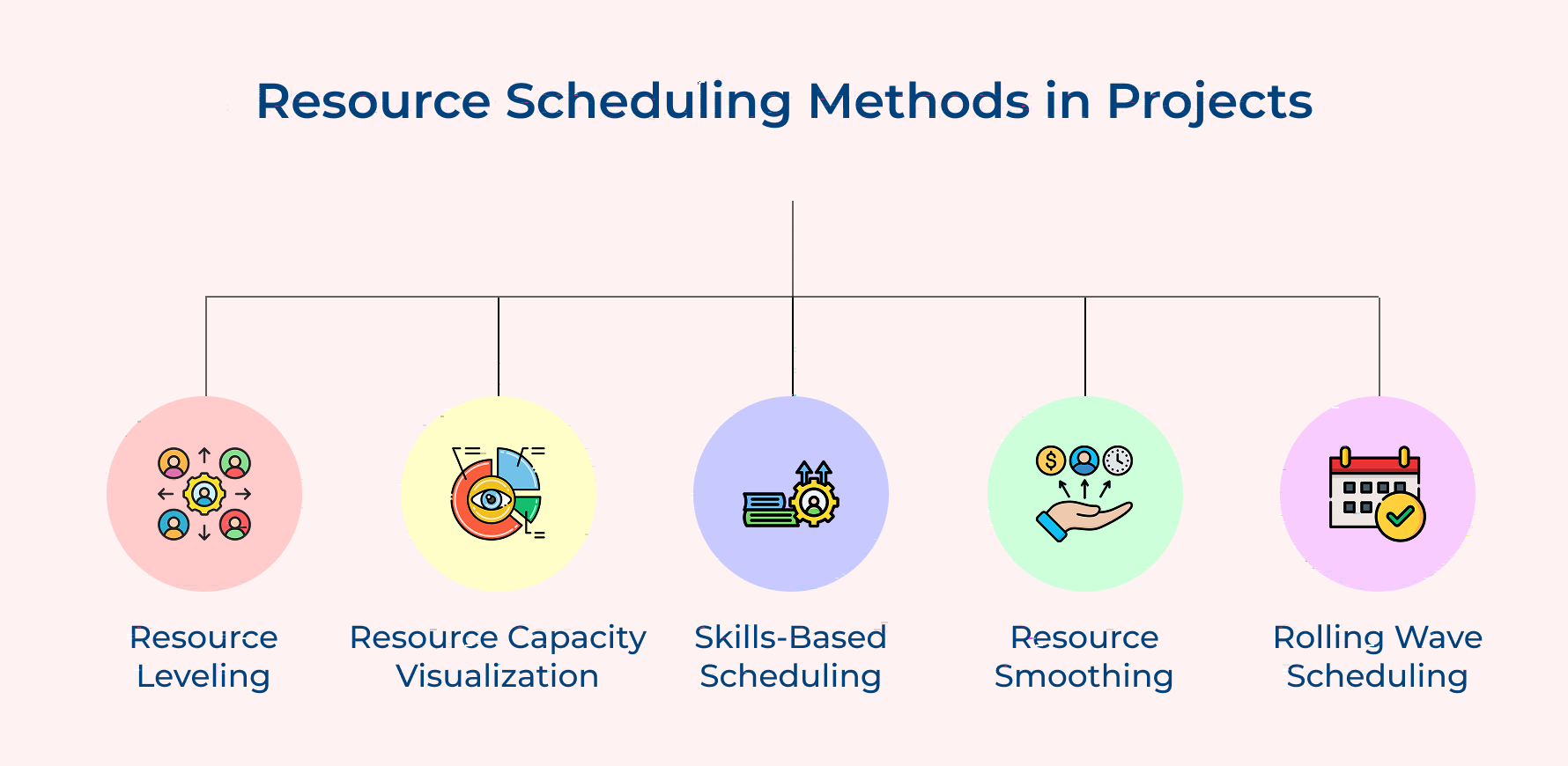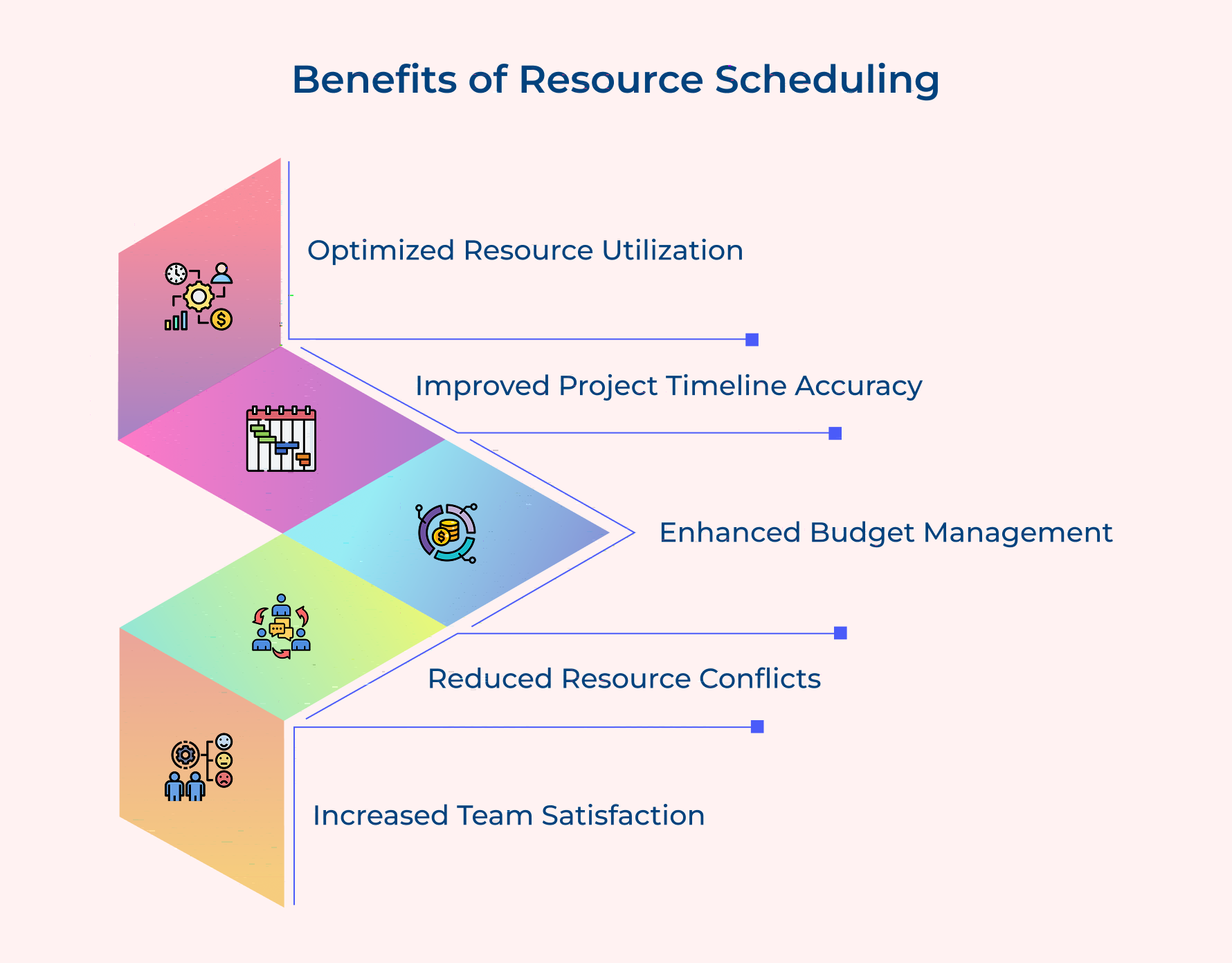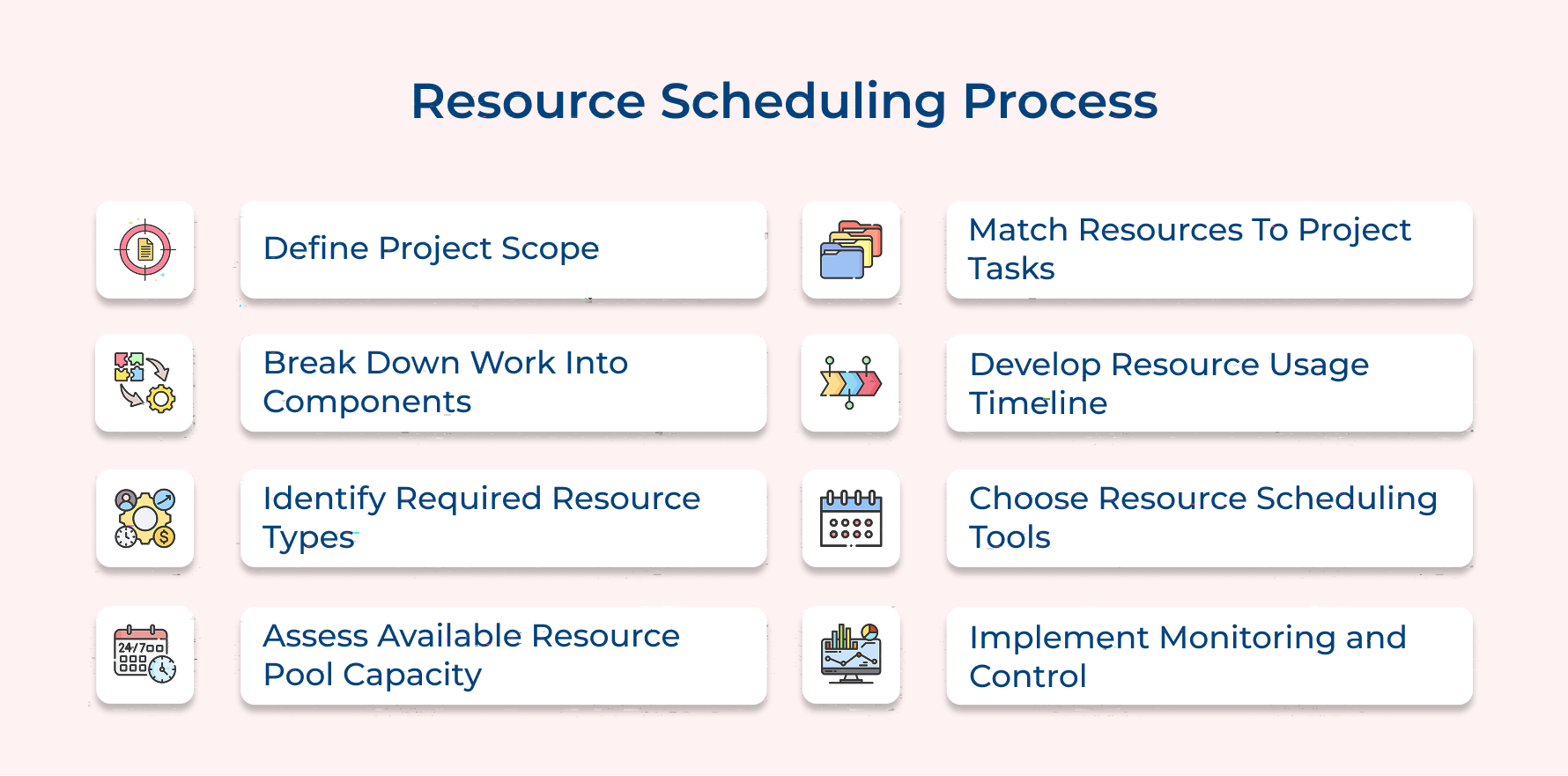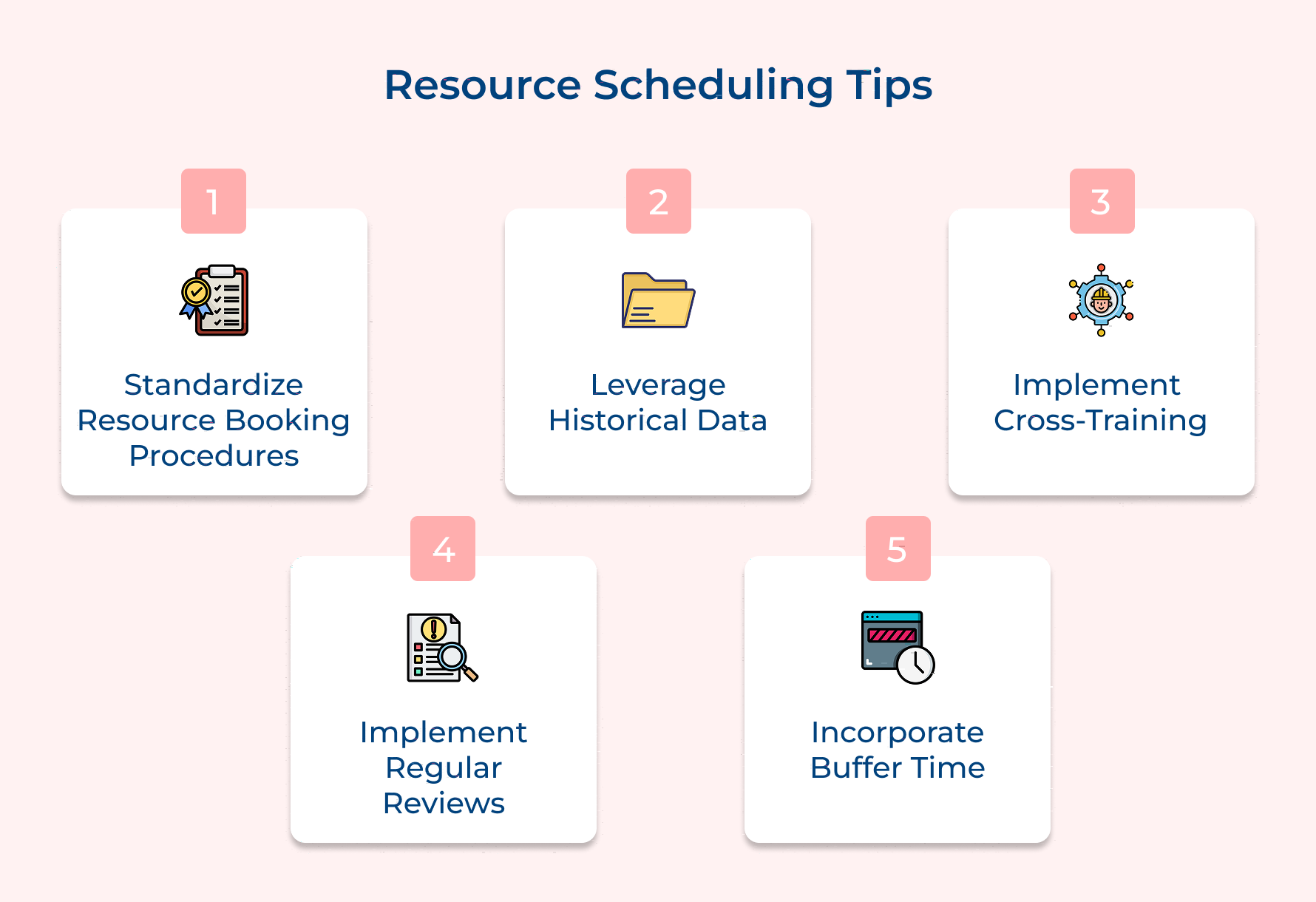1. Define Project Scope and Requirements
Defining project scope establishes the foundation for resource scheduling by clarifying what must be delivered and under what constraints. This critical first step prevents scope creep and ensures all necessary resources are identified to meet project objectives as well as client expectations.
Examples of project scope for resource scheduling:
- Development of e-commerce platform requiring frontend and backend developers
- Marketing campaign needing copywriters and designers with set deadlines
- Construction project requiring specialized equipment and certified personnel
- Software implementation demanding specific technical expertise and integrations
When defining scope for resource scheduling purposes, consider not only deliverables but also quality standards, timeline constraints, and budget limitations. These factors directly influence resource requirements and help determine if current capacity can meet project demands or if additional resources are needed.
2. Break Down Work Into Components
Breaking down work into components transforms large, complex projects into manageable pieces that can be assigned to specific resources. This decomposition makes it easier to estimate durations, identify dependencies, and allocate appropriate resources based on specific skill requirements for each task.
Resource scheduling effectiveness depends on the quality of work breakdown structure. Breaking projects into clear parts helps project managers assign the right people to each task. It also makes it easier to spot problems or resource conflicts early.
Pro tips:
- Create standardized templates for common project types in your organization to ensure consistency in how work is broken down and to save time on future resource scheduling efforts.
- Use progressive elaboration techniques where higher-level components are broken down in greater detail as the project approaches, allowing for more precise resource allocation closer to execution.
3. Identify Required Resource Types Needed
Identifying required resource types involves determining all the human skills, technologies, and materials necessary to complete project tasks successfully. Here project managers can secure appropriate resources with the right qualifications and capabilities before project execution begins.
Types of resource types needed in projects:
- Human resources: Specialists with specific professional skills and experience levels
- Equipment resources: Hardware, specialized machinery, or technical infrastructure
- Software resources: Digital tools, platforms, licenses, or custom applications
- Financial resources: Budgets, cash flow provisions, and contingency funds
Project managers should look at each task in the work breakdown to find the right resource types. They need to figure out what skills and tools are needed to get the job done. It includes checking the level of expertise required, how long the resource is needed, and if any special certifications are necessary for quality or compliance.
4. Assess Available Resource Pool Capacity
Project managers must check if there are enough qualified resources to meet project demands. This helps spot shortages or conflicts early and allows for better decisions about hiring or adjusting the project schedule.
- Evaluate Current Resource Availability: Managers should review all current resources and their existing project commitments. This includes checking how busy each person is and when they’ll be free to take on new work.
- Document Resource Capabilities Effectively: Keep a clear record of each team member’s skills, experience, and certifications. This makes it easier to match the right people to the right tasks.
- Consider Scheduling and Commitments: Look at upcoming time off, part-time roles, training, and admin duties. Including these in your plan helps avoid scheduling surprises and keeps projects on track.
5. Match Resources to Project Tasks
Matching resources to tasks means assigning the right people as well as tools to each job based on skills, availability, and growth needs. Using resource planning software makes this process more efficient, helping projects run smoothly by ensuring tasks are handled by those best suited for the work, without overloading the team.
Assign Based on Skills: Give tasks to people whose skills and experience match the job. This improves quality and avoids wasting expert time on simple work or giving tough tasks to those who aren’t ready.
Balance Workload Appropriately: Spread work evenly across the team. This keeps everyone productive without burning anyone out and ensures all team members are used effectively.
6. Develop Detailed Resource Usage Timeline
A resource usage timeline shows when each person or tool is needed throughout a project. It turns general planning into a clear schedule. Teams get to work together smoothly, avoid resource conflicts, and understand how resources are being used across the organization.
Effective Ways to Create Resource Usage Timelines:
Gantt Chart Visualization: Gantt charts use horizontal bars to show who is working on what and when. They include start and end dates, task dependencies, as well as help spot overlapping assignments or busy time periods.
Resource Heat Maps: Heat maps use color to show how heavily resources are being used. Red shows overload, green shows underuse. Managers get to quickly find imbalance in workloads.
Resource Histograms: Histograms use vertical bars to compare required hours with available hours over time. They help spot when you have too few or too many resources for planned tasks.
Sprint or Period-Based Allocation Tables: These tables break down assignments into weekly, bi-weekly, or monthly blocks. They show how much time each resource is spending on different projects, making commitments clear.
For example, a marketing agency might develop a resource timeline showing that a senior copywriter is allocated at 50% capacity to Project A for weeks 1-2, then transitions to 75% capacity on Project B for weeks 3-4, while maintaining 25% availability for client meetings and revisions throughout the month.
7. Choose Resource Scheduling Tools
Selecting a resource scheduling tool means finding software that helps you assign tasks, track resource use, and make informed decisions. The right tool should support your team’s needs, improve visibility, and work well with your current systems.
Questions to Ask When Evaluating Tools:
- Does the tool provide real-time visibility into resource availability across the organization?
- Can the system handle the complexity of your project portfolio and resource pool?
- How easily does the tool integrate with existing project management and financial systems?
- Does the interface allow for intuitive resource allocation and quick identification of conflicts?
- Will the reporting capabilities support resource utilization analysis and capacity planning?
Key Factors to Consider:
Scalability – Can it grow with your team and projects?
Customization – Can it adapt to your specific workflows?
Accessibility – Is it usable by remote or distributed teams?
Security – Does it protect sensitive project and employee data?
Ease of Implementation – How fast and smooth is setup?
Total Cost of Ownership – Consider software, training, and support costs.
User Adoption – Is it intuitive enough for your team to use regularly?
Different organizations have different needs. Agencies may need better creative workflows, while consultancies benefit from advanced scenario planning.
8. Implement Monitoring and Control
Monitoring and control help track how resources are used while also making adjustments when things go off track. This turns resource scheduling into a continuous process, not just a one-time plan. It ensures resources stay well-managed as project needs change.
Benefits of Effective Monitoring
Good monitoring lets project managers compare planned vs. actual resource use. It helps spot problems early, like bottlenecks or underused team members. Quick action can then be taken to fix issues before they delay the project or increase costs. Regular check-ins, automatic alerts, and forecasting meetings keep the project on schedule as well as resources used wisely.
Pro Tips for Implementation
- Assign clear responsibility for tracking resource use. Choose team members to monitor usage and alert managers before problems grow.
- Use a standard process for changes. Make sure all big changes to resource use are reviewed and approved to avoid surprises later.
